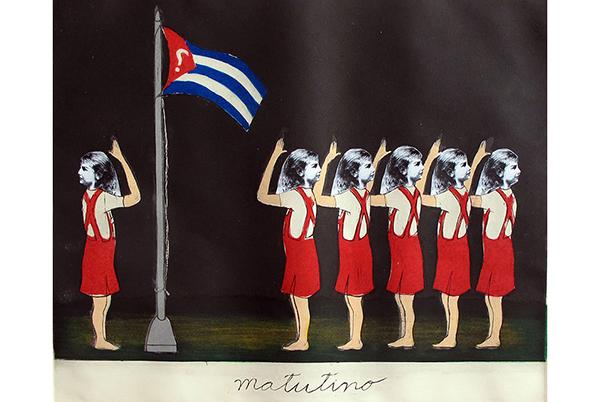House of Egorn unveils its latest group show La patria que vuela (“Homeland in flight”): Five Voices from Cuba, coinciding with Berlin Art Week. The gallery brings together five of today’s most important female Cuban artists and presents new work alongside earlier pieces never seen in Europe before. The art on show collectively tackles concepts and questions of national identity, personal loss and belonging, homeland and migration, and ranges from photography, painting, video and installations to an extensive public performance piece taking place across the city centre of Berlin.
Artists Cirenaica Moreira, Aimée García, Lidzie Alvisa Jimenez, Sandra Ramos and Elizabet Cerviño represent several decades of artistic practice from Cuba and are important witnesses to a fascinating history, culture, society, and open future of a nation that to this date is sparsely represented internationally. The exhibition is curated by Elvia Rosa Castro from La Havana. Bringing together five high profile Cuban artists and presenting new work can be seen as a coup for the young institution. House of Egorn has recently received critical acclaim internationally for its retrospective of the work of Cuban painter Eduardo Ruben, as well as for its inaugural show Mapping in Memory.
The art space at the heart of Berlin focusses on emerging and mid-career artists from Latin America and Asia and rapidly establishes itself as
Berlin’s home to a new generation of artists working at the crossroads of visual arts and other genres.
As one of Cuba’s most important photographers of today, Cirenaica Moreira’s work has been widely acclaimed for its capacity to transcend the political dimension and to create images that allow complex readings on many layers. Using everyday domestic costumes and props, and most often casting herself or her daughter, she creates dramaturgical narratives rather than single images. A survey of early as well as new work will be part of La patria que vuela.
Aimée García’s work Discurso suprematista (Suprematist Conversation) is an intricate collage of headlines from Cuba’s very few official newspapers, which the artist has laminated and then individually embroidered. She thus creates spaces of silence and meditation and invites the spectator to embark on an internal, individual journey, while the original news contents are practically obliterated and only preserved through shapes and colours. The work will be accompanied by documentations of her performance piece La dama de rojo (The Lady in Red) at this year’s Biennale in Havana.
Lidzie Alvisa Jimenez presents two installations that receive their public debut in this show. The pieces take on the ideas of ‘revolution’ and ‘moral’ and, through a witty yet serious interpretation of the daily school teaching, link them to the repetitive methods of indoctrination that ultimately has led to a loss of meaning of these concepts that are fundamental to the national psyche in Cuba. Her work speaks of a generation marked by disillusion and doubt that dares to take on and scrutinise an iconic aesthetic of the past.
Sandra Ramos’s work is highly autobiographical. An artistic encounter with the protagonist from Lewis Carroll’s Alice in Wonderland runs through her oeuvre, and can be found in the engraving works as well as the video animation she will show at House of Egorn. Her artist book, Cielos (Skies), is dedicated to death and the eternal hope of mankind for the afterlife. There are references to Edgar Allan Poe’s Raven, to Kafka, as well as to gospel music, but she ultimately refers to art, literature and human thought as ways to achieve transcendence and temporary immortality.
Elizabet Cerviño opened the exhibition with an extensive public performance piece taking place on the streets of Berlin and culminating at the centre of political power in Germany. Using stones from the Cuban Sierra Maestra national conservation area where the revolution began in 1959, the artist comments with her land art work on displacement, migration and the loss of a sense of belonging with an epic journey through the city centre of Berlin. She passed through the Tiergarten via the canal, the Spree, the Reichstag and other locations and traces of her performance can still be found on the streets and along the canal.
‘La patria que vuela’ – House of Egorn, Berlin Art Week – 17 September to 24 October

